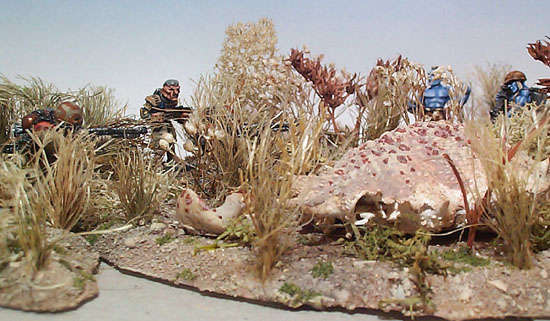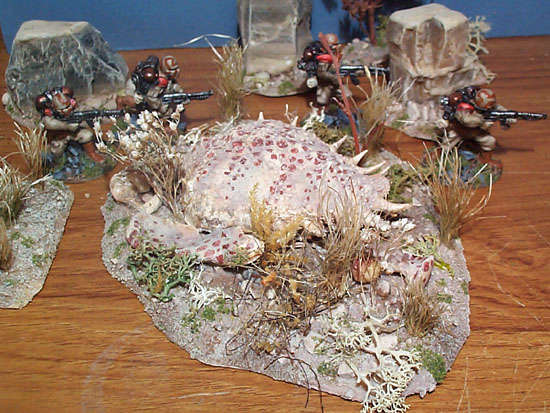Crab Skeleton
![]()
 Urged on by the 'Traitor', Nort special forces converge on a pair of Rogue Troopers. |
|
If you are making scenery for a sci-fi game then crab skeletons
and the hard shelled remains of other sea-life can be a cheap and easy
way to spice up the terrain. I particularly to combine them with the
arid terrain, evoking an image of long-gone seas, perhaps banished by
terraforming, where these giant and exotic creatures once roamed. |
Materials
|
|
|
Construction
|
|
Plaster Reinforcement Ancillary parts Attaching to base |
 The models here are from Alternative Armies (I think).
In the background are Rock
Pillars.
The models here are from Alternative Armies (I think).
In the background are Rock
Pillars. |
Painting
|
|
The crab skeleton was practically this colour already, but it was painted to accentuate the texture.
|
![]()
©2001. All rights reserved.
![]()
